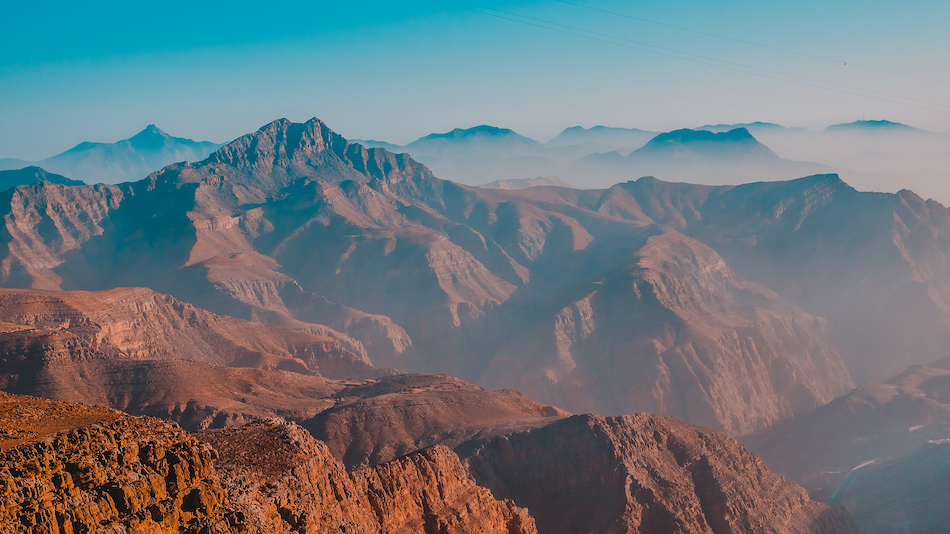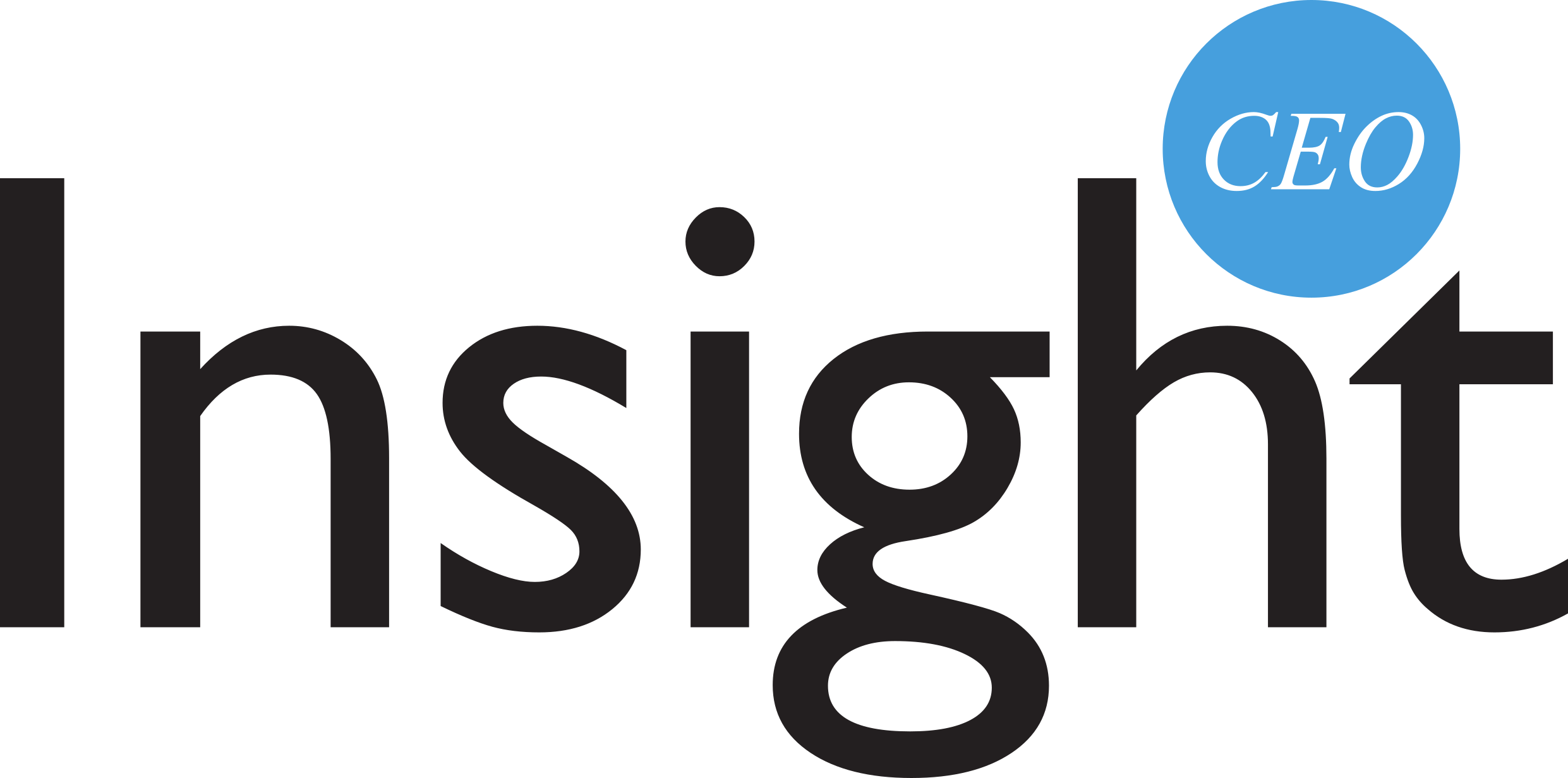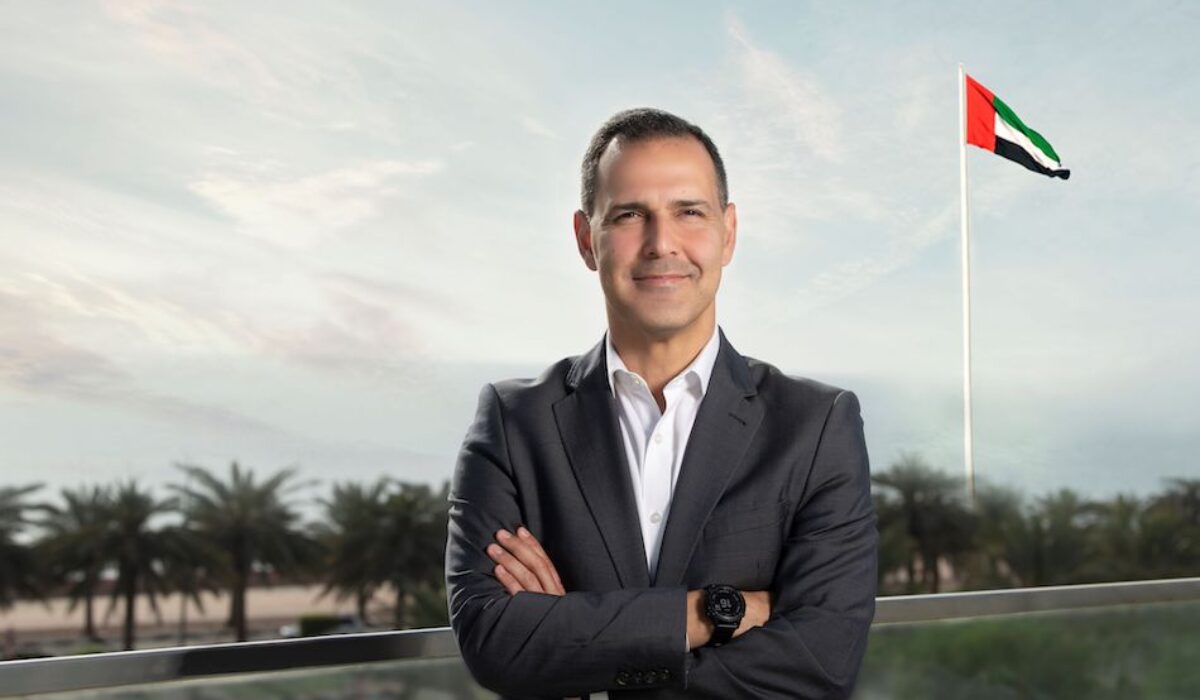Ras Al Khaimah: The Rising Star of Global Tourism and Investment
Ras Al Khaimah (RAK), often referred to as the “Nature Emirate,” is emerging as a beacon for global tourism and foreign investment in the UAE. With visionary leadership, sustainable strategies, and a commitment to inclusive growth, the emirate is rewriting the rulebook on what it means to be a modern, forward-looking destination. In this Q&A, Raki Phillips, CEO of Ras Al Khaimah Tourism Development Authority (RAKTDA), discusses the emirate’s ambitious plans, groundbreaking investments, and its evolving position on the global tourism map.
Jamie Harrison: Ras Al Khaimah recently secured its largest FDI deal to date with Wynn Resorts. Can you elaborate on the significance of this $3.9 billion investment for the Emirate’s tourism and hospitality industry, and what it means for future foreign investment opportunities?
Raki Phillips: The Wynn Resort Al Marjan Island is a game-changer for Ras Al Khaimah and has a broader impact on hospitality and tourism across the Emirate. Representing the largest single foreign direct investment in the emirate’s tourism sector at about US$5.1 billion, and at almost 25,000 sqm, it is set to elevate the entire hospitality industry when it opens in early 2027, as the first ever integrated resort in the region.
Featuring 1,500+ beautiful rooms, suites and villas, 24 dining options, innovative spa and wellness experiences, a high-end shopping complex, a theatre, a massive 7,500 sqm event space, and other amenities, the resort will attract new types of travellers, boost tourism revenues, create thousands of jobs, and reinforce Ras Al Khaimah’s pole position as a leading tourism and investment destination.

We’re seeing the “Wynn Effect” positively impact the wider hospitality real estate sector with other big international brands such as Nobu Hotels, W Hotels, JW Marriott, Hilton, Nikki Beach and Ushuaïa under Palladium Hotel Group developing properties in Ras Al Khaimah that are scheduled to open within the next two years.
“Our ambition is to become the region’s leading sustainable tourism destination, providing meaningful experiences while preserving our identity as the Nature Emirate.”
JH: How does Ras Al Khaimah position itself as an attractive destination for foreign investors and visitors compared to its regional competitors, particularly in adventure tourism and the MICE sector?
RP: Ras Al Khaimah has a long-term growth environment offering attractive returns. The emirate’s population is expected to grow by more than 60% in the next 7 years. It has a stable, resilient and growing economy, driven by a number of diverse and strong industries. This is demonstrated by its consistent ‘A’ range ratings from international ratings agencies: this month, Ras Al Khaimah’s rating was upgraded to A/A-1 with a stable outlook by international credit agency S&P Global, and from A to A+ by Fitch Ratings back in May 2024.
But tourism is the fastest-growing sector in Ras Al Khaimah. This growth reflects our strategic efforts in enhancing our tourism offerings, expanding our reach to new markets, and attracting a diverse range of visitors.

We have seen consistent year-on-year growth in overnight arrivals, with a forecasted growth of 5% by the end of this year. We are aiming to raise tourism’s contribution to 1/3 of GDP by 2030, double our hospitality operations, and triple our visitor growth to 3.5 million by 2030. This clear vision for growth is driven by careful master planning of Ras Al Khaimah, and through a collaborative, sustainable, and community-driven approach.
Adventure is a strong part of what makes Ras Al Khaimah an attractive investment – we are one of the most sought-after destinations for adventure experiences in the region, with an exceptional natural terrain spanning mountains, deserts and beaches. For example, Ras Al Khaimah boasts the highest mountain in the UAE, Jebel Jais, with thrilling experiences such as Jais Flight, the world’s longest zipline; Jais Sledder, the region’s longest toboggan ride; and the region’s first Bear Grylls Explorer Camp. We’ll also be unveiling new adventure activities in the coming months.
As for the MICE sector, Ras Al Khaimah boasts a world-class portfolio of events, exhibitions and workshops. We’re located within 4 hours’ flight time of 31% of the world’s population, and just 45 minutes’ drive from the world’s busiest airport, Dubai International Airport. We saw a 23% growth in MICE revenue in 2023 and have an impressive track record for hosting over several prestigious international and regional events every year, such as the Arab Aviation Summit and the Global Citizen Forum.
JH: Ras Al Khaimah’s “Balanced Tourism” strategy emphasizes sustainability. Can you explain how this framework attracts investors while ensuring environmental, cultural, and social sustainability?
RP: Ras Al Khaimah is already well known as the ‘nature’ Emirate, but we have a desire to progress and evolve as a destination. Through this strategy, we’re ensuring development grows but in a sustainable way, benefitting both residents and tourists alike – which means safeguarding natural assets, minimising overtourism, and supporting local communities, their surroundings and cultural identities.
These efforts are part of a broader Sustainable Tourism strategy, which already earned the destination the first Earth Check Silver in the Middle East in 2023, affirming our commitment to balancing tourism growth with sustainability, all while providing meaningful experiences for visitors and maintaining the destination’s identity as the Nature Emirate.

Our ambition is to become the region’s leading sustainable tourism destination by next year. To achieve this, we are leading on various initiatives such as helping tourism and hotel businesses measure their impact and take actionable steps to reduce it across 10 sustainability metrics including energy and water use, waste management, carbon footprint and social impact through our ‘Responsible RAK’ program – 24 hotels and attractions have already earned the Silver Certification.
In partnership with key authorities, we’ve just launched our Culture and Heritage Vision 2030. This has identified 20 priority heritage sites for preservation and sustainable development in the emirate, including four sites that are already on the UNESCO World Heritage Tentative List. Preserving sites like Dyahah Fort, the UAE’s last hilltop fort, or Al Jazeera Al Hamra, the last authentic pearl fishing village in the region, requires close collaboration with conservation experts, archaeologists, and historians to protect historical integrity while adopting sustainable practices that align with global eco-tourism goals. Involving local communities is equally vital, grounding preservation efforts in authenticity and safeguarding both the structures and cultural traditions of each site.
Over the long haul, we have applied a mindful approach to new hotel developments, consulting with hospitality partners to ensure thoughtful development and a measured pipeline to avoid rapid, less well-planned expansion. Moreover, we are ensuring that each project not only respects but enhances the natural environment.
ESG principles are increasingly important to global investors. By embedding sustainability at the core of our tourism strategy, we not only ensure the long-term health of Ras Al Khaimah’s natural and cultural assets, which are the foundation of our tourism appeal, but also attract responsible investors that prioritise investing in destinations with enduring value and sustainable growth potential.
JH: With a threefold increase in the value of hospitality and real estate projects, what factors make Ras Al Khaimah an untapped yet lucrative market for global investors?
RP: Ras Al Khaimah’s tourism infrastructure is undergoing a transformative phase, with significant investments aimed at boosting its appeal as a global tourism destination. Recent years have seen a number of new resorts opening, such as the Mövenpick Resort Al Marjan Island, InterContinental Mina Al Arab, Anantara Mina Al Arab, and Sofitel Al Hamra Beach Resort, enhancing the appeal of our destination. We have formed strategic partnerships with local and global hotel operators providing tailored support that ranges from feasibility studies to marketing assistance, making it easier and more financially viable for new hotels to establish themselves.
Over the next few years, we are doubling our hospitality portfolio with a pipeline of 21 properties set to add over 7,000 keys to our current hotel inventory. It’s crucial that we have a robust hospitality portfolio with an increasing number of global visitors. This will pave the way towards achieving our growth goals and meeting the growing demand that we are seeing.
“The Wynn Resort Al Marjan Island is a game-changer, creating thousands of jobs and cementing Ras Al Khaimah as a global tourism and investment hub.”

JH: RAKTDA has a strong focus on making the Emirate an accessible tourism destination. How does this align with your broader vision of making Ras Al Khaimah a destination for all?
RP: I believe that the future of tourism is inclusive and accessible. People with special needs spend approximately $8 billion on tourism services annually, and the World Health Organization estimates that 1.3 billion people or 16% of the global population experience a significant disability today, which is expected to reach 2 billion by 2050. The majority will have a desire to travel, but the industry is falling short in catering to their needs.
While many hotels have already embraced accessibility, we have set our sights on ensuring Ras Al Khaimah becomes a truly accessible destination. With this in mind, we have partnered with Sage Inclusion, a global accessible travel expert, to undertake the largest accessibility assessment of its kind in the Middle East. This comprehensive 12-week audit covered over 50 hotels, 10 attractions, Ras Al Khaimah International Airport, and ground transportation, evaluating accessibility across various disability categories including mobility, vision, hearing, cognitive and allergy. The initiative aims to elevate Ras Al Khaimah as a flagship destination for accessible tourism, ensuring that every visitor can fully enjoy and explore the emirate.
JH: Initiatives like the Emirati Hospitality Program aim to integrate local talent into the tourism sector. How do these programs support the Emirate’s vision of inclusive economic growth, and how do you encourage foreign stakeholders to participate?
RP: The tourism sector is a key driver of job growth. Tourism represents one in ten jobs worldwide – and according to the UN World Tourism Organization, the number of international tourists is expected to reach 1.8 billion by 2030. By 2030, RAKTDA aims to create thousands of new jobs in the sector, ensuring that tourism benefits everyone in Ras Al Khaimah.
Initiatives like the ‘Emirati Hospitality Program’ attracts top talent from local UAE universities and integrates them into the Ras Al Khaimah workforce, empowering the local community of Emiratis to participate in the tourism and hospitality sector. It is an important step that we are taking to ensure equitable distribution of tourism’s economic benefits and provide more authentic experiences for visitors.

Nevertheless, we have an equity-based talent and culture approach and welcome talent from all over the world. Today, RAKTDA’s diverse team is made up of more than 80 members representing 27 nationalities, with a nearly balanced gender ratio of 43 women to 39 men. Women hold five out of the 10 leadership positions at RAKTDA. In fact, RAKTDA has been certified as a Great Place to Work for the fourth consecutive year, is listed on the “Best Workplaces in the Middle East 2024” list and was named a winner for the second time in the small company category on the ‘Best Workplaces for Women™ – GCC 2024’ list.
Our inclusive environment, which includes actively promoting career progression and leadership, and with attractive family-friendly policies, means that everyone can thrive at RAKTDA, no matter who you are or where you come from.
JH: Your partnership with Oman promotes sustainable cross-destination tourism. How do such collaborations influence FDI opportunities and Ras Al Khaimah’s visibility on the global stage?
RAKTDA’s cross-destination MoU, signed with the OMRAN Group in 2023, aims to entice visitors to explore the rich cultural heritage, biodiversity, and adventure attractions of both the emirate of Ras Al Khaimah and Musandam in Oman, in one sustainable trip. We are just 90 minutes’ drive from one another, share an easy border crossing and the natural beauty of the Hajar mountain range, as well as a rich, intertwined history and cultural heritage.
The rise of cross-destination tourism is helping to create more sustainable and memorable choices for travellers, enhancing accessibility and convenience, whilst boosting international tourism in both destinations – thus creating more business opportunities and an even more attractive investment environment.
JH: As an industry veteran with vast experience in global tourism, what is your long-term vision for Ras Al Khaimah, and how do you see the role of foreign investment shaping that vision?
RP: In recent years, we have been focused on enhancing our unique tourism ecosystem and creating a vibrant destination that appeals to a wide range of visitors. As travellers increasingly seek transformative experiences, we are investing in tourism offerings to cater to their evolving preferences, from nature-based attractions to high-end beach resorts and immersive cultural experiences. At the same time, our growing calendar of world-class events — from music festivals and sporting tournaments to cultural celebrations — continues to draw global attention.

Over the long term, it’s crucial that we have a robust hospitality portfolio and grow our hotel inventory to meet rising demand from tourists across the globe each year. Our strategy for this is to diversify; different segments want different things, and so we have been investing in hotels across various categories, from luxury resorts to mid-market offerings, ensuring a balanced portfolio. Currently, the emirate has 56 hotels and resorts with total inventory of 7,800 rooms across a wide range of price points – from ultra-luxurious 5-star resorts to family-friendly all-inclusive products, and more affordable 4-star and 3-star hotels.
Overall, I want travellers to see for themselves that Ras Al Khaimah is a truly unique, beautiful and versatile destination, ideal for everything from weddings and family or multi-generational vacations to event-related tourism and MICE.
Foreign investment is key to achieving this vision. By attracting strategic partnerships and fostering collaboration with international investors, we can accelerate the development of world-class infrastructure and hospitality offerings. Foreign investors bring not only financial capital but also global expertise that can enhance the quality and competitiveness of our tourism offering.
Our approach to foreign investment is guided by mutual value creation. We aim to work with partners who share our commitment to sustainable practices and are aligned with our goal of enhancing the overall visitor experience. For example, through public-private partnerships, we can develop eco-conscious resorts, adventure tourism hubs, and cultural experiences that reflect the emirate’s unique identity.

